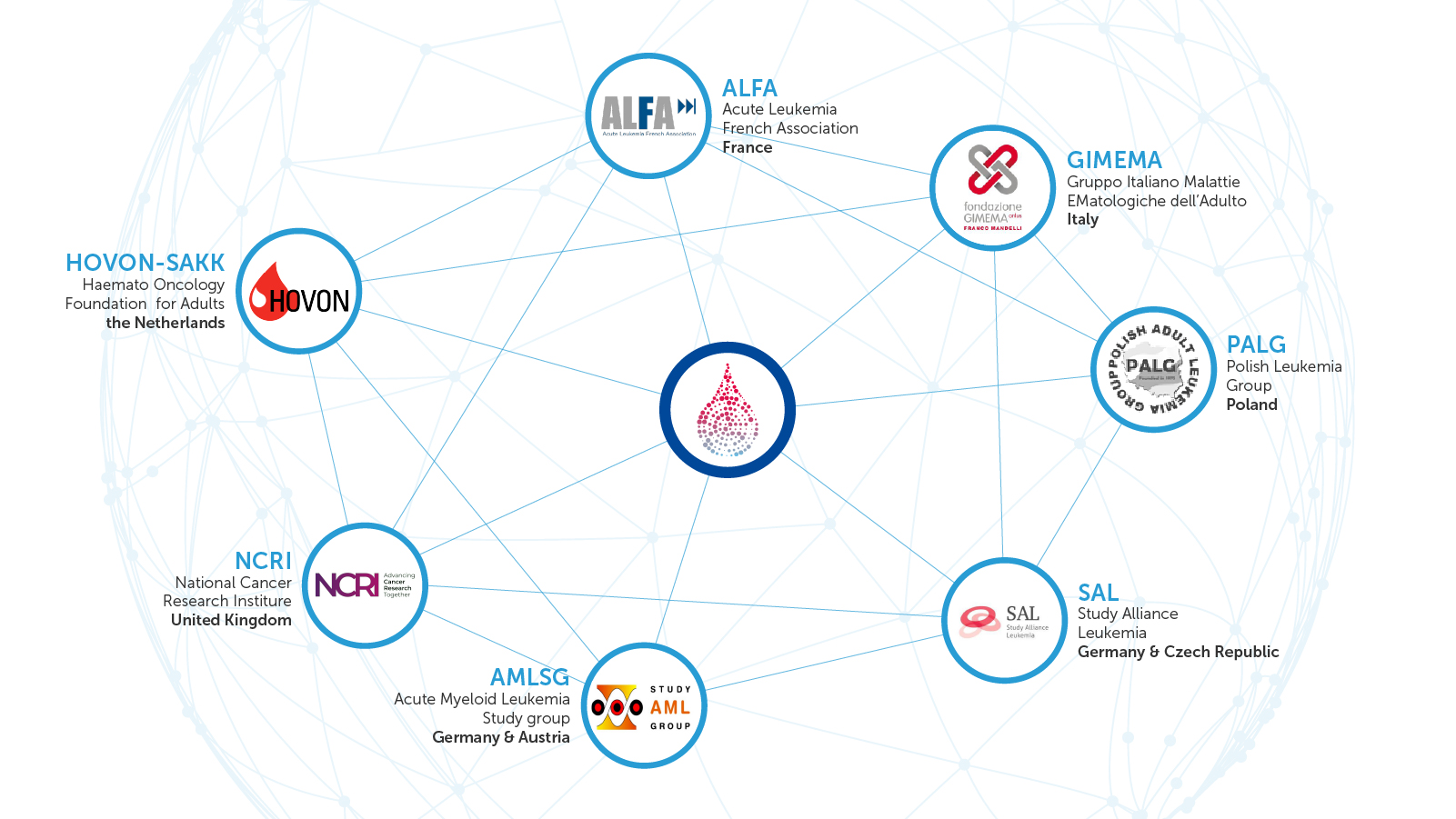Home> Research Projects> AML-4: Using big data to confirm the link between MRD and survival in AML
Measurable residual disease (MRD) is a powerful prognostic marker in Acute Myeloid Leukemia (AML), with MRD positivity after chemotherapy predicting a dismal outcome both inside and outside the transplant setting. However, variations in trial protocols and different technologies used to measure MRD can make it difficult to assess the correlation between MRD and survival at an individual patient level.

Overall survival (OS) is the gold standard endpoint for demonstrating therapeutic efficacy and securing regulatory approval for new drugs to treat Acute Myeloid Leukemia (AML). However, clinical trials that use OS are time-consuming to carry out and new endpoints which enable efficacy to be assessed earlier are critically needed in order to speed up the drug development and approval process and help guide treatment decision-making in clinical practice. These surrogate endpoints must be able to reliably predict survival outcomes.
Many studies have convincingly shown that MRD positivity after chemotherapy for AML is linked to a poor prognosis in both transplant and non-transplant settings. However, it has proved almost impossible to correlate results across different trials in order to conclusively confirm the role of MRD as a predictive biomarker at an individual patient level. This is due to variability in clinical study protocols, as well as differences in the technologies – and in particular the sensitivity of the technologies – used to measure MRD in various AML trials.
This project will harness the power of the HARMONY Big Data Platform to evaluate MRD status after 2 cycles of chemotherapy as a potential surrogate endpoint for OS in AML. The study will consist of a prospective, pooled analysis of individual data from over 7.500 AML patients included in randomised, controlled trials of first-line treatment in AML. The primary method for measuring MRD will be multicolor flow cytometry (MFC) and quantitative polymerase chain reaction (qPCR) for nucleophosmin 1 (NPM1). These are the most standardised and best accepted techniques for measuring MRD which have been incorporated into the majority of clinical trial protocols. MRD data will be analysed for samples derived from both bone marrow and blood. Measurements will be taken after 2 cycles of chemotherapy as this is a key clinical timepoint for the selection of post-remission treatment regimens.
The ultimate hope is that this research will establish MRD as a new surrogate marker for survival in AML which would then permit an earlier assessment of drug efficacy during clinical trials. In this way, MRD could help to accelerate drug approval, particularly of novel therapies, and may also be used to aid in individualised treatment-related decision making for patients.
Timeframe: 2021-2023